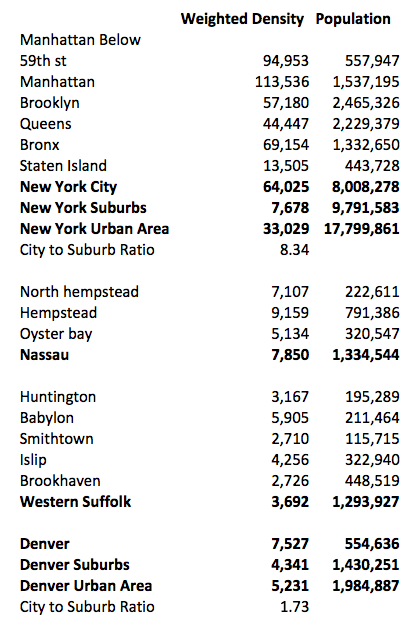 Posted Nov 30, 2015, 2:24 PM
Posted Nov 30, 2015, 2:24 PM
|
|
Registered User
|
|
Join Date: Nov 2015
Posts: 1
|
|
Quote:
Originally Posted by memph

Another way to look at the density of various cities is the weighted or perceived density. Basically, it describes the average density a person lives at. Most people have done it by census tracts, so it would be the density of the average census tract. So if you have a census tract with a population of 5000 on 0.25 sq miles (20,000 ppsm) and another census tract with a population of 5000 on 2 squares miles (2,500 ppsm), the weighted density would be the average of 2,500 ppsm and 20,000 ppsm, or 11,250 ppsm as opposed to a gross density of 10000/2.25=4444 ppsm. You basically multiply the density of each census tract by the %of the total population.
Nei at city data found the weighted densities of different parts of NYC:

From: http://www.city-data.com/forum/urban...-wealth-8.html
Those numbers suggest that Manhattan N of 59th street would have a weighted density of 124,124ppsm and population of 979,248.
One thing that's interesting is that the Bronx's weighted density is higher than Brooklyn's even though the Bronx's gross density is lower. This means most of the Bronx's residents live on a small part of the land while Brooklyn is more evenly spread out. |
The number of metropolitan New York I knocked, forcing some to think, and I wonder how it looks in porónaniu to other agglomerations in the world

|